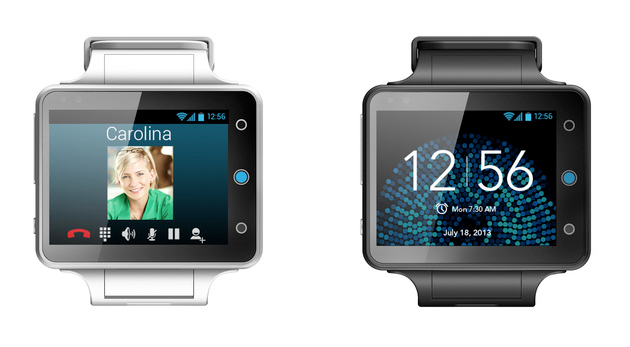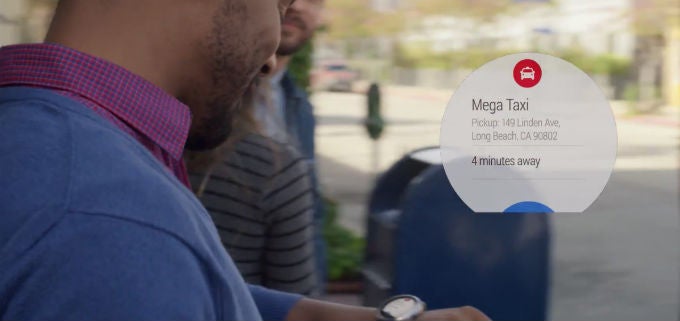Just how open will Android Wear be?
This article may contain personal views and opinion from the author.

Where are the layers?
As we have talked about many times before, the Android platform that we all know is built in two distinct layers: the Android open source layer, and the Google layer. The Android open source layer is the code that is free for anyone to use and adapt, and it is what has been put to work for Amazon Kindle Fire devices, Nokia's new X lineup, Xiaomi's MIUI software, and more. The Google layer is where you get... Google services, obviously. This is filled with closed source products that Google controls, like Gmail, Chrome, Maps, YouTube, Google Play services, the Play Store, etc.
Ever since Sundar Pichai has taken over as the head of Android, the Google layer has been getting much more attention and developer resources than the Android layer. The vast majority of improvements that are found on Android devices are actually updates to Google Apps or Google Play services, rather in the Android open source layer. The lines have also been blurred more and more between what is Google and what is Android, because Google is slowly replacing everything in Android with a proprietary app, including the launcher (with Google Now), the keyboard, the gallery app (with Google+ Photos), the browser (with Chrome), and on and on. But, those lines are still fairly easy to parse, because the Google Now launcher is only available on select devices, and only a small percentage of users are on Android 4.4 which makes G+ Photos the default.

That's what makes the Android Wear announcement somewhat troubling. As nice as the software looks, everything that we've seen is a Google APK, not the Android system at all. This makes perfect sense, because, like most Android unveilings, all we have seen so far essentially amounts to a promotion for Google services. So, depending on what is left of Android Wear once you strip away the Google layer, it could be much more difficult for manufacturers to adapt Android Wear for use without Google services. Right now, we don't even know what Android Wear would look like with the Google layer removed. It might even look quite a bit like the Neptune Pine (above), which is using AOSP software on its wearable smartphone smartwatch, which may be functional on a large enough scale, but certainly isn't all that pretty, at least compared to what we've seen with Android Wear.
But, the visuals aren't just eye-candy, it's the basic functionality of the system. Without the Google APK running on Android Wear, there isn't much left for the open source layer underneath. There may be a way to push notifications to an Android Wear device without using Google Cloud Messaging, but it could end up requiring a companion app or some other solution that would need to be built from scratch. Similarly, most of the benefits of contextual information would be lost completely.
Good for Google, but...
Of course, some may wonder if any of this really matters. The Android Wear that we've seen so far looks like a great solution to the problem of wearable devices. As mentioned earlier, it focuses on the ideals that help to make it clear why wearables could be valuable products. Google has been stressing that the plan is to only offer information that is contextually aware and smart, glanceable, helpful, and requires little to no interaction. The more a user has to directly interact with a smartwatch, the less appealing the device becomes, because a screen that small is simply not designed for interaction. We have smartphones, tablets, and computers for the items that need more input. Wearables are helper devices at their best.
The Android Wear that we've seen understands that, and has put forward what looks to be a solid solution for wearable devices. But, the problem is that all of this may only end up being good solutions for manufacturers that deal with Google, which brings more hardware requirements and cost to manufacturers, because while Android may be free, Google Mobile Services are not. If the best and most useful pieces of Android Wear are closed source, it will be great for Google, because it would show users the benefits of living the Google life, and giving Google more data. But, it would also be a move that is far more anti-competitive than we've seen from Google before.

Google has always been a company that tended to lead with that carrot rather than a stick. It put out Nexus devices to present the features it sees as important, and the hardware choices it would like to see used in more of the ecosystem, but never mandated anything. It built features like Google Play Games to make it easier for smaller developers to offer advanced features by hooking into the Google ecosystem. It created Google Cloud Messaging to make notifications better for those who hooked in. But, it has never been a requirement to use any of these services.
Google may be making its own apps to replace core Android apps, but the stock apps still exist. There is still a stock browser, email client, calendar, and gallery app in Android, and they work pretty well. They haven't seen the attention and updates that some may like, but ultimately those are the same apps that tend to be rebuilt by manufacturers who fork Android anyway. Also, while manufacturers need to meet certain requirements and maybe pay licensing fees to get access to Google Mobile Services, it isn't required to make any of those apps the default. Almost every manufacturer has made its own browser, and Samsung has its own email client, calendar, and even content stores. So far, despite rumors, Google has done nothing to require its apps be put front and center on Android devices.
Google has built an impressive ecosystem of apps, and set more strict requirements for using those products, but the Android base is still there, and it works quite well. If it didn't, we wouldn't be seeing companies continue to fork it for proprietary use, like Amazon, Xiaomi, and now Nokia. The Android base may not work quite as well, but once you add in a quality app store, the differences can be minimized. And, it can be better for users who don't happen to want to live the Google life. Maybe those users prefer the MIUI life or the Amazon life, and those options are there.
Do wearables fit Google's goal?
For the longest time, we've tended to assume that Google's ultimate goal is simply to get more people connected to the Internet. More people on the web, means more eyeballs for Google ads, and therefore more revenue for Google. However, the more market share Android takes, the more control Google is trying to assert on the platform. Most of this seems reasonable enough. Google wants to offer the best experience for those who use its products, so the Google layer gets a lot of attention. Google wants more users on newer software, so it implements new rules to lead manufacturers to using newer software with the Google Apps as the carrot.
But, it is very possible that wearables don't really add much to Google's ultimate goal of getting people connected to the web, at least not yet. As mentioned, wearables in their best state right now are companion devices, not standalone devices. And, wearables have a limited use case. The limits of a display that small mean you can't do much more than check ephemeral information. There may be some minimalist apps that will run on the platform, but it's unlikely that users will use smartwatches for watching video, browsing the web, or playing games. Those are the most valuable places for Google ads, but they don't have much use on smartwatches.

Wearables are best as companion devices to smartphones, but they are also best as companion pieces to Google's overall strategy. Wearables don't move the needle in terms of getting more people on the web, but they can be valuable in make each person who is already on the web more valuable for Google. The multitude of sensors, contextual understanding, and location awareness of a wearable can offer Google more information on a user. This feedback will make products like Google Now better for the user, but will also make ads more targeted and make each user more valuable to Google.
This means that wearables are only valuable to Google if those wearables feature Google services that feed back into the system. Google is certainly offering a very enticing platform for wearables, but an AOSP version of Android Wear has little to no value to Google, unlike AOSP that you'd find on other mobile devices. This could mean that Google has put even less effort into the AOSP Wear, or it could mean that there is no real AOSP Wear at all. We've reached out to Google asking about this matter, but we don't expect an answer to any of these questions until Android Wear sees its full release in June.










Things that are NOT allowed: